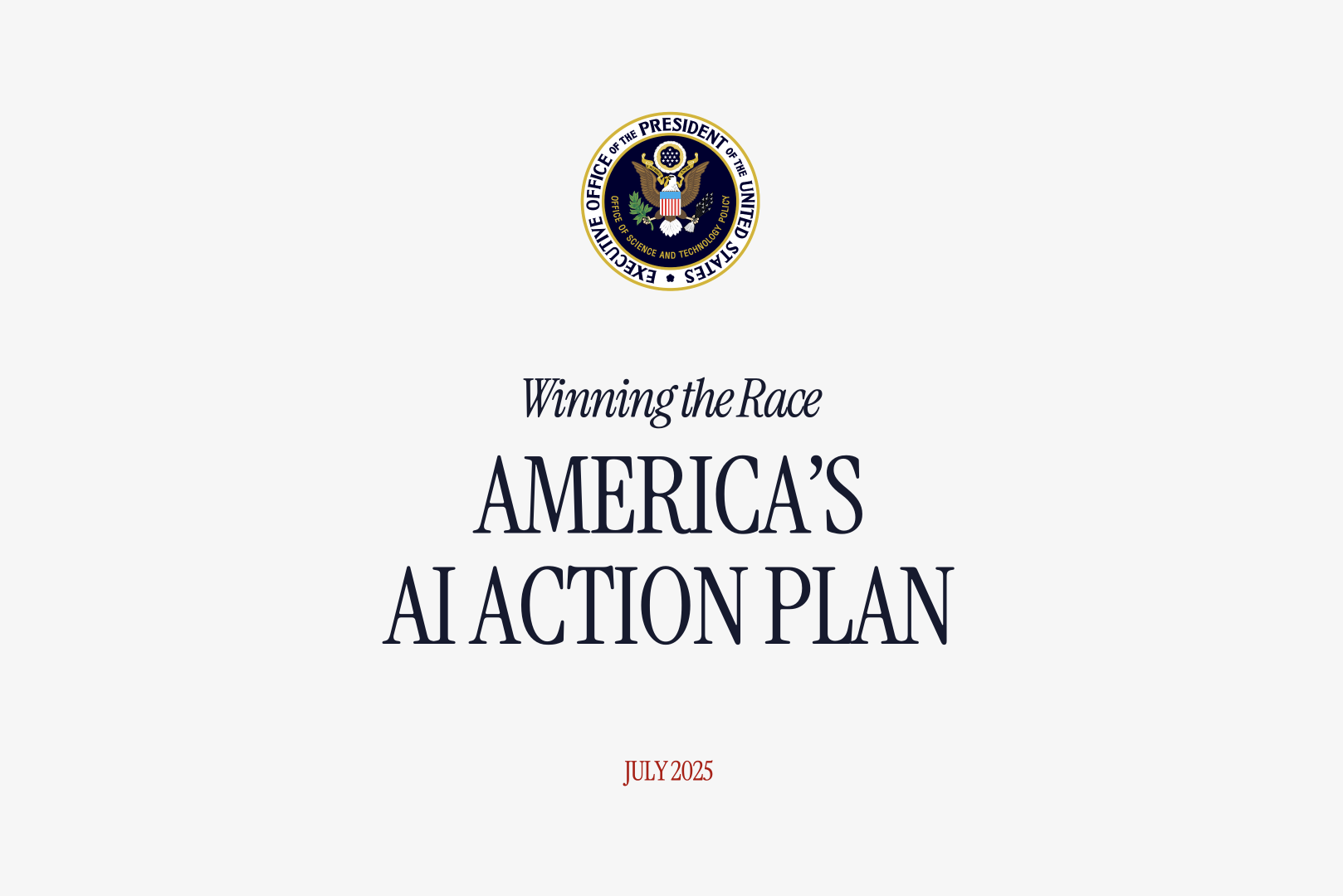Podcast Episode Details
Back to Podcast Episodes
The White House's plan for open models & AI research in the U.S.
Today, the White House released its AI Action Plan, the document we’ve been waiting for to understand how the new administration plans to achieve “global dominance in artificial intelligence (AI).” There’s a lot to unpack in this document, which you’ll be hearing a lot about from the entire AI ecosystem. This post covers one narrow piece of the puzzle — its limited comments on open models and AI research investment.
For some context, I was a co-author on the Ai2 official comment to the Office of Science and Technology Policy (OSTP) for the AI Action Plan and have had some private discussions with White House staff on the state of the AI ecosystem.
A focus of mine through this document is how the government can enable better fully open models to exist, rather than just more AI research in general, as we’re in a shrinking time window where if we don’t create better fully open models then the academic community could be left with a bunch of compute to do research on models that are not reflective of the frontier of performance and behavior. This is why I give myself ~18 months to finish The American DeepSeek Project.
Important context for this document is to consider what the federal government can actually do to make changes here. The executive branch has limited levers it can pull to disperse funding and make rules, but it sends important signaling to the rest of the government and private sector.
Overall, the White House AI Action Plan comes across very clearly that we should increase investment in open models, and for the right reasons.
This reflects a shift from previous federal policy, where the Biden executive order had little to say about open models other than them getting grouped into models needing pre-release testing if they were trained with more than 10^26 FLOPS (which led to substantial discussion on the general uselessness of compute thresholds as a policy intervention). Later, the National Telecommunications and Information Administration (NTIA) released a report from under the umbrella of the Biden Administration that was far more positive on open models, but much more limited in the scope of its ability for agenda setting.
This is formatted as comments in line with the full text on open models and related topics in the action plan. Let’s dive in, any emphasis in italics is mine.
Encourage Open-Source and Open-Weight AI
Open-source and open-weight AI models are made freely available by developers for anyone in the world to download and modify. Models distributed this way have unique value for innovation because startups can use them flexibly without being dependent on a closed model provider. They also benefit commercial and government adoption of AI because many businesses and governments have sensitive data that they cannot send to closed model vendors. And they are essential for academic research, which often relies on access to the weights and training data of a model to perform scientifically rigorous experiments.
This covers three things we’re seeing play out with open models and is quite sensible as an introduction:
* Startups use open models to a large extent because pretraining themselves is expensive and modifying the model layer of the stack can provide a lot of flexibility with
Published on 1 month, 3 weeks ago